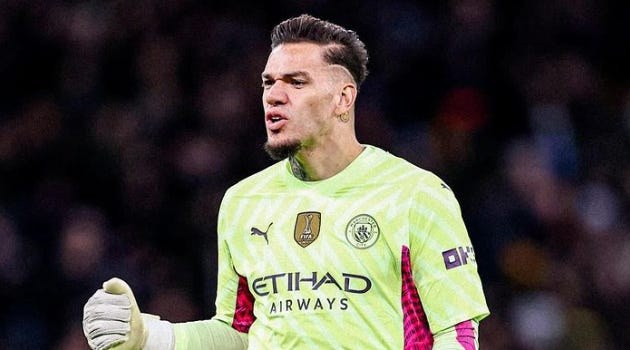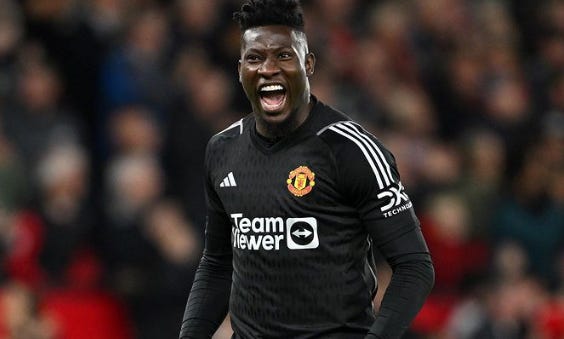Each Data for Dummies article is accompanied by a video broadcast on our YouTube channel.
Some say there is only one set of numbers that matters in football – the scoreline.
However, at More Than A Game we like to delve into the data to bring you closer to the biggest stories, to explain exactly what a player offers or why something is happening on the pitch.
After all, if the world's most successful clubs consult data when recruiting players and coaches, why shouldn't fans hold an interest in numbers?
With data becoming increasingly visible in the football world, we compiled this handy explainer to tackle some of the more ambiguous terms being thrown around.
Here, More Than A Game looks into how we can use data to assess goalkeeper performance.
All data from Opta Analyst unless stated otherwise
Expected goals on target (xGOT) and goals prevented
With xG (expected goals) and xA (expected assists) generally used to analyse attackers, surely somebody had to think of the goalkeepers?
Well, they did.
Expected goals on target (xGOT) data is collated in the same way as xG, but is a post-shot, rather than pre-shot, metric. In other words, it considers where a shot is placed within the goal.
While it can also indicate how well a player finishes chances, it is also commonly used to assess goalkeepers.
For instance, if a goalkeeper faces 40 xGOT throughout a season but only concedes 30 goals (not including own goals), they are said to have prevented 10 goals.
Goals prevented is worked out by the following calculation: xGOT - goals conceded (not including own goals)
So, let’s look at some live statistics from the ongoing campaign.
Focusing on the Premier League, we can see that Tottenham shot-stopper Guglielmo Vicario is the best-performing goalkeeper in the competition based on the goals prevented metric, at 6.9. On the flip side, Brentford’s Mark Flekken has conceded a whopping 7.4 goals more than would have been expected based on the quality of shots he has faced, and props up the top-flight goalkeepers.
David Raya — the goalkeeper Flekken replaced at Brentford — might have ousted Aaron Ramsdale (-1.7) at Arsenal, but his goals prevented figure of -3.5 shows the Spaniard has struggled. Even Ederson, one of the league’s goalkeepers, has been far from at his best this term, and that is reflected in his figure of -1.9.
Andre Onana has faced plenty of criticism in his first six months as a Manchester United player, but in terms of shot-stopping, he has fared well, preventing 3.8 goals, which ranks him fourth in the division, ahead of the likes of Alisson (2.9), Nick Pope (1.8), Bernd Leno (1.5) and Jordan Pickford (0.2) to name a few.


It must be noted that teams that face a lot of shots often have goalkeepers performing well when it comes to goals prevented. There are exceptions to the rule, of course, but these are sides that generally rely on their goalkeepers to pull them out of trouble.
When covering Europe’s top five leagues, Las Palmas’ Alvaro Valles is the best-performing goalkeeper when it comes to goals prevented (9.2).
Goals prevented is not just a useful metric for assessing current performance levels, but it can be utilised to assess future performance, too.
For example, a goalkeeper may go through a rich run of form at the start of the season — let’s say for the first 10 matches. Even if the defence in front of them is allowing plenty of shots on goal, the team will most likely be picking up points if the goalkeeper is keeping opponents at bay through above-average shot-stopping.
However, that often does not prove sustainable over the course of more than one season. For example, last season, Newcastle United only conceded 33 times in their 38 Premier League matches. However, their 41.86 xGA shows an overperformance of 8.86 (Newcastle conceded between eight and nine goals fewer than would have been anticipated).
Newcastle benefitted from some poor finishing from their opponents, but also some excellent goalkeeping from Pope last season. However, even though Pope is in the positive for goals prevented (1.8), he had not hit quite the same heights as he did in 2022-23, and that was prior to the injury that has seen him sidelined for the past month or so.
Another example would be Fulham goalkeeper Leno. He led the league for goals prevented last season, but so far this term has prevented just 1.5. Eventually, it proves unsustainable.
By Patric Ridge




